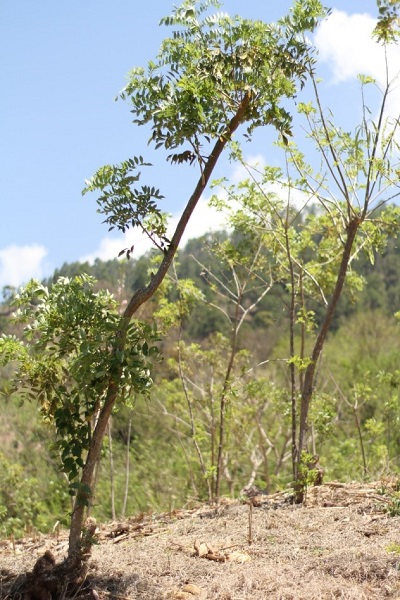Good practices of agroforestry systems: the Kuxur rum system
In the dry eastern corridor of Guatemala the rural population is highly vulnerable to food insecurity. It is characterized by erratic rains, water limitations, and low yields of traditional crops such as basic grains. Fields are located on dry slopes, approximately between 200 to 800 meters above sea level and are characterized by shallow, steep, and stony soils. The soils are often degraded by the intensive cultivation of maize, beans and sorghum, which reduces their aptitude for agriculture. The Kuxur rum agroforestry practice is based on the indigenous knowledge of using the multipurpose species Gliricidia sepium, combining it with the annual crop production systems, which improves soil moisture conservation, especially in the drought or heatwave period. The practice, called Kuxur Rum, which in the Ch'ortí language means "my wet land", has been promoted in the context of the Special Program for Food Security (known in Spanish as PESA) in the department of Chiquimula, Guatemala. This program was funded by the Spanish Agency for International Cooperation for Development (AECID). This document describes step by step how to establish a Kuxur Rum agro-forestry system.

